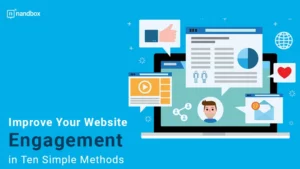The New & Improved Magento 2 Offers Better Performance, Security, And Modern Features
So, if you are still using the unsupported Magento 1 or any other older online shopping software, you need to upgrade it now! Or else, your shop can get hacked or face major functionality issues.
However, this migration to Magento 2 is not that easy. It needs a lot of planning, execution, and testing to avoid any disturbance in your business.
That’s why, in this article, I’ll show you all the steps for migrating your e-commerce store to Magento 2, with lots of valuable insight and tips along the way.
Let’s begin!
1. Pre-Migration Preparation
Transferring your e-commerce store to Magento 2 is a huge move, so a little planning will make the process smooth.
Here’s what you do:
Assess Your Current Setup
- Review all extensions, themes, and custom code. Determine which are essential and check their compatibility with Magento 2.
- Catalog all data, such as products, customers, orders, etc.
Create a Migration Plan
- Make a clear timeline and budget, considering your current setup’s complexity and available resources.
- Backup of your current platform to safeguard against any issues during the migration.
2. Choose a Migration Method
Manual Migration
| Pros | Cons |
| Offers advanced control throughout migration, personalizing each step. | Time-consuming, labor-intensive, and error-prone when dealing with large or complicated stores. |
Automated Migration Tools
| Pros | Cons |
| Simplifies the migration process, saving time and effort. Many tools offer advanced features like data mapping, conflict resolution, and performance optimization. | Can be costly, especially for large-scale migrations. The quality of results may vary depending on the tool and your specific data. |
If you have a skilled team of developers, manual migration will be sufficient for small to medium-sized stores with basic setups.
But, when you have large or complex stores with sensitive data, use automated migration tools.
I’d suggest using the professional Magento 2 migration solutions. It’ll significantly streamline the process and reduce the risk of errors.
3. Data Migration
Moving data is crucial when transitioning to Magento 2, as it involves transferring essential business information, like product details, customer records, and order history securely and accurately.
Install and Configure the Data Migration Tool
Magento offers an official Data Migration Tool to make this process easy.
This command-line utility, installed via Composer, handles data transfer complexities between Magento 1 and Magento 2.
After installation, configure the tool by setting up database details for both versions and mapping any custom fields or tables.
Remember, proper configuration is key to accurate data transfer.
Transfer Your Data
Start by migrating basic settings, like store configurations and tax settings, before moving on to products, categories, customer info, and orders. The tool helps transfer all product and customer data while following the correct sequence to avoid inconsistencies.
The delta migration feature of the tool addresses ongoing changes during the process, such as new orders or customer updates, ensuring your Magento 2 store stays in sync with Magento 1.
4. Theme and Extension Migration
Migrating to Magento 2 involves more than just data transfer; you need to maintain or enhance your site’s look, feel, and functionality. This includes:
Checking Extension Compatibility
Check which Magento 1 extensions have Magento 2 versions.
Then, install these updated extensions and test them in the new environment.
For extensions without Magento 2 support, find alternatives or develop custom solutions. Always focus on retaining essential features.
Choosing a Suitable Theme
Magento 2’s new architecture means Magento 1 themes aren’t compatible.
So, select a Magento 2 theme or develop a new one. Pre-built themes are quick but might need customization.
If your Magento 1 theme is heavily customized, recreate it for Magento 2. This involves transferring design elements and possibly refreshing the design to leverage Magento 2’s advanced capabilities.
5. Test and Quality Assurance
Testing is crucial during migration to ensure your new Magento 2 store runs smoothly and meets performance and usability standards. It helps catch issues before going live, minimizing downtime and customer dissatisfaction.
Here are a few functional and performance tests that you must execute:
- Test Core Features: Check essential functions like browsing, checkout, payment, and shipping. Include customizations and extensions.
- Admin Panel: Ensure tasks like adding products and processing orders work. Use tools like Selenium for repetitive tests.
- User Testing: Have real users check the store and give feedback on usability and speed.
- Load Testing: Simulate multiple users to find performance issues under normal traffic.
- Stress Testing: Test extreme traffic conditions to see how the system handles and recovers.
During these tests, monitor server resources like CPU usage and memory to identify optimization needs and ensure a stable, user-friendly store.
6. Launch and Post-Migration Optimization
Going Live
Finally, your Magento 2 store is ready to launch. However, moving from development to a live site is critical and needs careful handling.
Here’s a quick guide to ensure a smooth launch:
SEO Configurations
Set up canonical tags, meta titles, descriptions, and image alt tags. Implement 301 redirects from old URLs to preserve SEO rankings and use Magento’s URL Rewrite Management for efficient handling.
Also, submit an updated XML sitemap to search engines for quick indexing.
Final Reserve
Backup your entire site, including the database and files, before going live. Store it somewhere safe and ensure it’s restorable if needed.
DNS Switch
Update your DNS records to point to the new server.
This may take up to 48 hours to propagate, so plan the switch during off-peak hours and inform your customers about potential downtime.
Post-Migration Monitoring
After DNS changes, monitor your site for performance issues, check critical functionalities, and watch traffic patterns. Address any problems swiftly to maintain a positive customer experience.
Maintenance and Optimization
Migrating your online shop to Magento 2 is a big win, but there’s still some work to do regarding post-migration optimization. It is essential for peak performance. This involves:
Reconnecting Analytics
Make sure Google Analytics and other tracking tools are set up correctly on all pages, including checkout and confirmation. Also, verify that your goals and funnels are tracking properly, and reconnect to programs like Google Search Console or Google Tag Manager to gather all necessary data.
Admin Training
Magento 2 has a new interface and features, so training your team is crucial. Focus on the admin panel, product management, order processing, and reporting features. Providing resources like Magento’s user guide will help your team manage the store effectively.
Continuous Monitoring and Optimization
Keep an eye on site speed, server performance, and user experience. Use tools like Google PageSpeed Insights to spot issues, and listen to customer feedback for areas to improve. Remember that regular updates, like refining navigation or checkout, will keep your Magento 2 store competitive and user-friendly.
Conclusion
Transferring your e-commerce app to Magento 2 can be a complex process. But it is something you must do because the potential benefits are substantial. So, carefully follow the steps outlined in this guide to successfully transition your online store to a more powerful and flexible platform.







